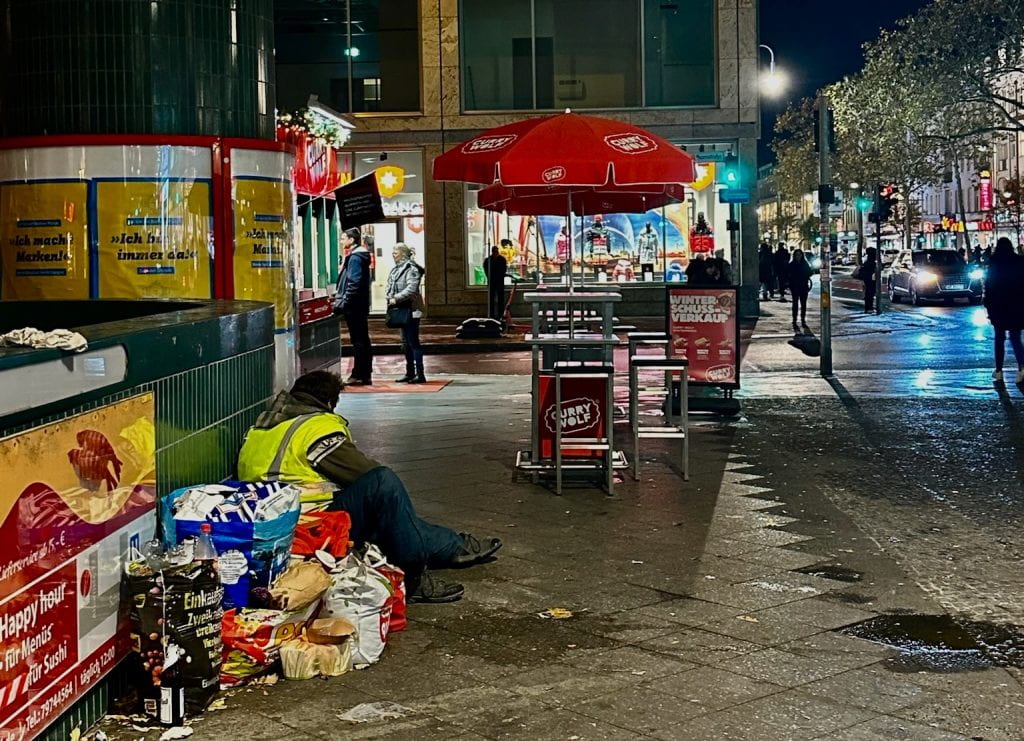By Chloe and Rajnandini
The UK government plans to send off the first group of illegal migrants to Rwanda next spring.
On November 15, despite the Supreme Court’s decision, the UK government set out to proceed with its decision to expel illegal migrants to Rwanda, Africa.
Ignoring the UK Supreme Court’s ruling that it is unlawful, Prime Minister Rishi Sunak is moving forward with his proposal to transfer asylum seekers to Rwanda.
“Stop the boats” is one of five objectives that Sunak has set for his government to reduce the influx of asylum seekers.
According to Sunak, planes to transfer migrants to Rwanda would begin operating by the spring of 2024.
An agreement was signed in April last year between London and Kigali, the capital of Rwanda, based on which Britain would transfer asylum-seekers to Rwanda so that the Rwandan asylum system could handle their requests for asylum.
Those who were found to be ineligible for protection would be deported, while those who were successful would remain in Rwanda.
On the same day, Sunak said in parliament, “When people know that if they come here illegally, they won’t get to stay, then they will stop coming altogether.”
Sunak offered a two-pronged alternative in a press conference following what appeared to be a political setback to his government: The first objective is to turn the protocol of understanding with Rwanda into an international treaty in order to satisfy some of the court’s concerns concerning the migrant’s safety.
A five-year project was first announced in April 2022, which will send a number of asylum seekers who enter the UK unlawfully to Rwanda for processing.
Due to legal reasons, the first flight, which was scheduled for June 2022, was cancelled.
According to the BBC, the number of migrants arriving in small, unseaworthy boats to the UK has significantly increased over time, with the asylum seekers paying criminal groups that smuggle people into the country in dangerous vessels.
Several of those boats have sunk, and people have lost their lives by drowning as a result.
Aadeel, who overstayed in the UK, said he does not want to move or being send to anywhere else.
Aadeel, an immigrant who arrived in the UK a few years ago and is frightened of being deported, refused to give his last name.
He shared about some of his challenges in life.
Aadeel imagined a better life, one without violence and poverty. In an effort to improve his situation, he took the difficult choice to travel to the UK at great risk in the hopes of finding a better future.
“I work long hours for little money and am always afraid of being found out to be an undocumented immigrant.” said Aadeel.
Aadeel continued in trying despite the difficulties. Along his journey, he made friends, became fluent in the English language, and engaged himself within the community. He found hope and strength in the charity and support of strangers.
“The new policy scares me even more because what if I am next, I don’t want to leave this country to stay in Rwanda, I am more comfortable here.” added Aadeel.
“The legislation would prevent a large group of highly vulnerable refugees from depending on human rights protections by allowing it up to the Home Secretary to determine who should be safeguarded and those who should be deported—and excluding the courts almost entirely,” Adam Wagner, a well-known human rights lawyer, said in March of this year, the BBC reported.
Following that, more controversially, there are proposals to effectively overturn the Supreme Court’s decision.
Home Secretary James Cleverly agreed to a new deal with Rwanda in response to public outrage over the government’s proposal to deport asylum seekers there.
On December 5, in order to sign the latest migration agreement, Cleverly travelled to the capital of Rwanda.
The new agreement, which substitutes a non-binding memorandum of understanding and was signed by Cleverly, states that Rwanda will not deport asylum seekers to a nation where their freedom or lives would be in danger—one of the court’s primary concerns.
Cleverly projected that in the upcoming months, migrants will be travelling to Rwanda because the treaty resolved every concern brought forward by the Supreme Court.
The British Red Cross has stated their opinion on the policy and said that there should be no role for outsourcing in the UK’s asylum system. Numerous people are personally informing us of the worry and anxiety that recent decisions have caused.
“That this policy has left a significant impact on the men, women, and children seeking protection here, despite the fact they might not be directly affected by them.”
“We wish to collaborate with the government in order to build a more fair, humane, and efficient system. In order to lessen the overflow of applications, our country should offer safer alternatives to risky travel, better decision-making processes, and make sure that everyone is treated with respect and decency at all times.” said Mike Adamson the Chief Executive of British Red Cross.
“Britain has always been a popular immigration destination for Hongkongers, especially for those who hold BNO,” said Tina Cheng, associate director of Midland Immigration Consultancy. “However, it is uncertain whether the British government would also tighten the applications of BNO holders’ citizenship approval, including stricter consideration and requirements.”
The UK has been accepting a few hundred thousands of Ukraine refugees since the outbreak of the Russia-Ukraine War in 2022, and also HongKongers who hold British National Overseas (BNO) passports that want to become permanent British citizens.
Although the British government claimed the numbers of the above populations have slowed down, Midland Immigration Consultancy, which provides constant to overseas migrants, is worried that the British government might also tighten BNO holders migration rules.
Cheng added that due to such uncertain factors, the amount of Hong Kong migrants to the UK might reduce if there’s any new and stricter policies.
Apart from sending immigrants to Rwanda, the British government introduced more stricter plans to tighten the UK’s migration rules starting from next spring time.
Being a popular destination for migrants, the UK took 745,000 net migrants last year, making it the highest recorded figure.
On 4 December, home secretary James Cleverly announced in the Parliament that he aimed to reduce the numbers of immigrants by 300,000 people each year by increasing the minimum salary requirement for skilled worker visa applicants – from 26,000 pounds to 38,700 pounds, a total of 47 per cent rise.Family visa applicants’ average wage requirement is also increased to 38,700 pounds.
According to Statista, the average wage of the British workforce is only 34,963 pounds annually in 2023.
Meanwhile, the British government will reexamine and tighten the country’s shortage occupation list by possibly reducing positions that open for worker visa granted application.
People who work for the medical and health care sectors will be exempted from this new rule, but those who would like to bring their family members and dependents to the UK, will no longer be eligible to do so. Care providers in England will now only be able to sponsor migrant workers if they are undertaking activities regulated by the Care Quality Commission.
In addition starting from 16 January 2024, foreign workers must pay an extra of 411 pounds for the Immigration health surcharge (IHS) in order to have free access to the healthcare service of the UK’s National Health Service (NHS).
The IHS is a must during the immigration application and it is set to be increased from 624 pounds to 1,035 pounds.
According to the Office for National Statistics, the United Kingdom intakes 745,000 net migrants, more than last year’s estimated number of 606,000 people, making it the highest recorded figure. Most of the migrants come from non-european countries, namely India, Nigeria and China.
Home Office figures showed visas granted to foreign health and social care workers had doubled to 143,990 in the year to September. Those also brought in 173,896 dependents with them to the UK.
The home office explained such schemes hope to encourage business to consider taking local talent first instead of overly relying on migration workforces.
Cleverly said to the press that there’s a need to reduce the migrant population as it has gone far beyond the reasonable range. “It is clear that net migration remains far too high. By leaving the European Union we gained control over who can come to the UK, but far more must be done to bring those numbers down so British workers are not undercut and our public services put under less strain,” Cleverly said in the Parliament.
The Home Office explains that such policies aim to encourage business to consider British locals first instead of foreign workforce.
Madeleine Sumption, British political scientist and director of University of Oxford’s Migration Observatory said that the decision of raising the family income threshold would have the biggest impact.
Sumption’s job includes analysing the UK’s migration policies and research on the policies impacts to the society. She said the requirement that British citizens can bring a foreign partner to live with them in the UK is now doubled, making it extra difficult for family migration.
“Numbers of family migrations do not take up the majority of the migration population,but those who are affected, can be affected very significantly. The largest impacts will fall on lower-income British citizens, particularly women and younger people, who earn lower wages,” Sumption said.
Sumption explained that since COVID-19, the number of non-europeans coming to the UK for study and work purposes have significantly increased, especially those who are interested in the medical and healthcare sectors. She said it is the main reason for the high recorded net migration numbers in 2022.
The healthcare field is fearful that the immigration cut-down plans would worsen the manpower shortage issue. Martin Green, the chief executive of Care England, which represents large private care home providers, expressed his concern that it would be harder for care providers to recruit foreign workers.
Green said in a presser that if the government now wants to move away from international recruitment as the solution to fixing the social care workforce crisis, it must act swiftly and invest in improving the pay and conditions to drive domestic recruitment.
UK’s migration policies are targeting not only illegal migrants or refugees but also the possible future workforces and investors. Britain’s biggest public service union UNISON secretary Christina McAnea criticised that such policies would lead to a manpower shortage in the healthcare sector, calling it a “complete disaster”.
McAnea said on the British Television Talk TV’s interview that migrants summed up a large workforce in British hospitals and health care centres after Brexit. Without foreign workers, it would be a huge challenge for hospital operations.
The next United Kingdom general election is set to be held no later than 28 January 2025, prediction said the election might be held next year. The Conservative Party is facing pressure and stress brought by the huge population of migrants. To call for more polls, migrant control has become a major focus in the British political agenda.










